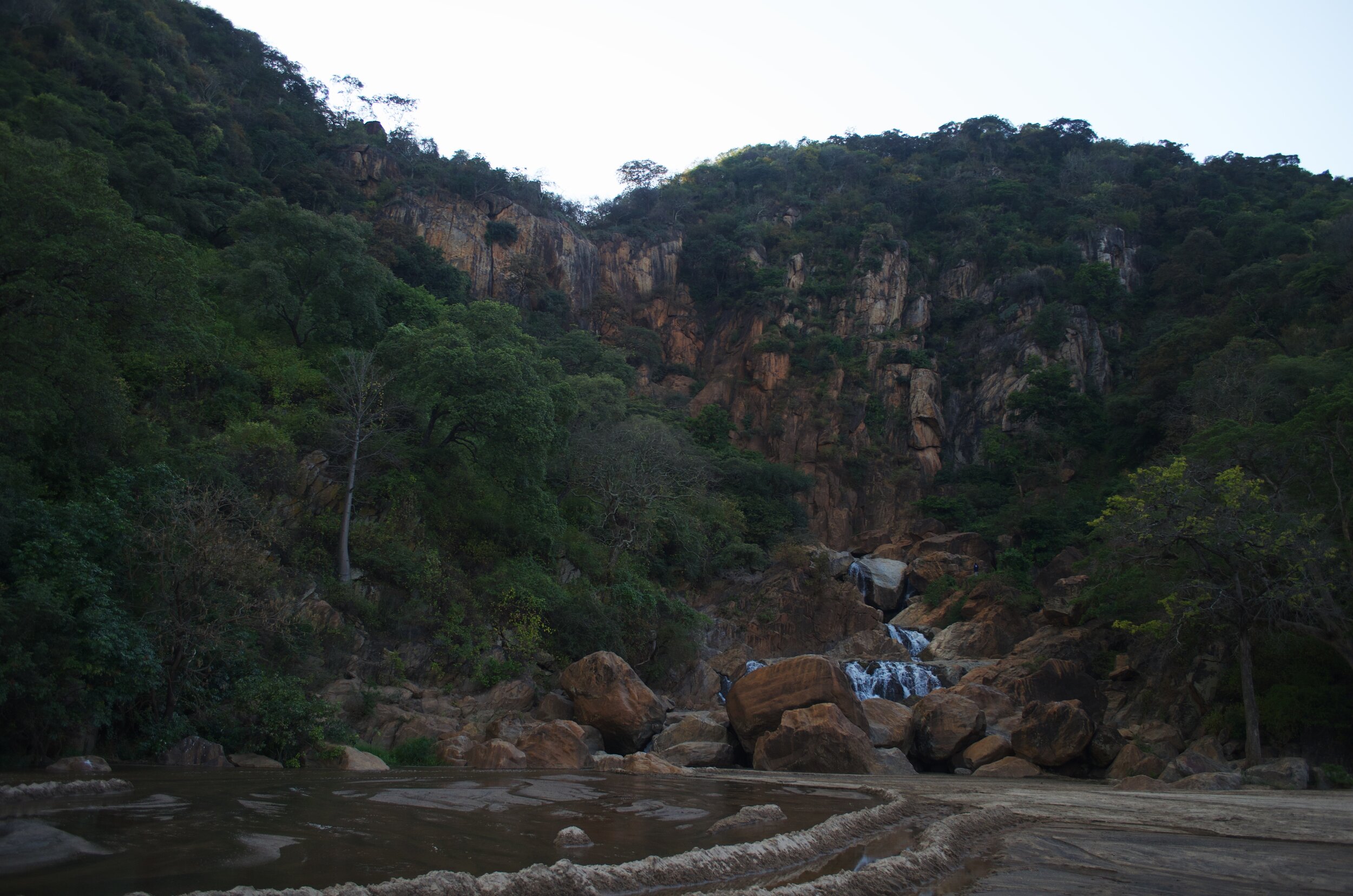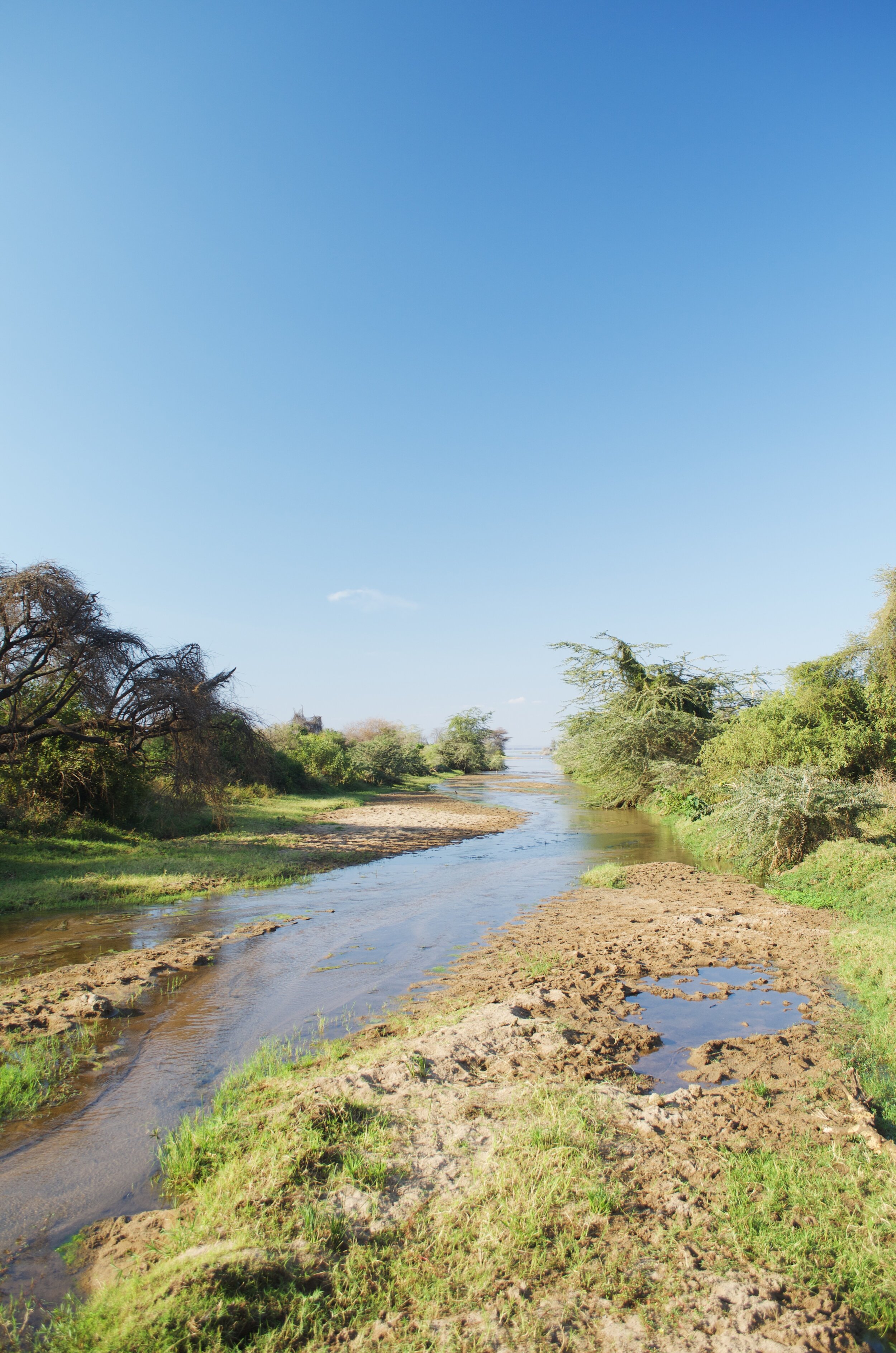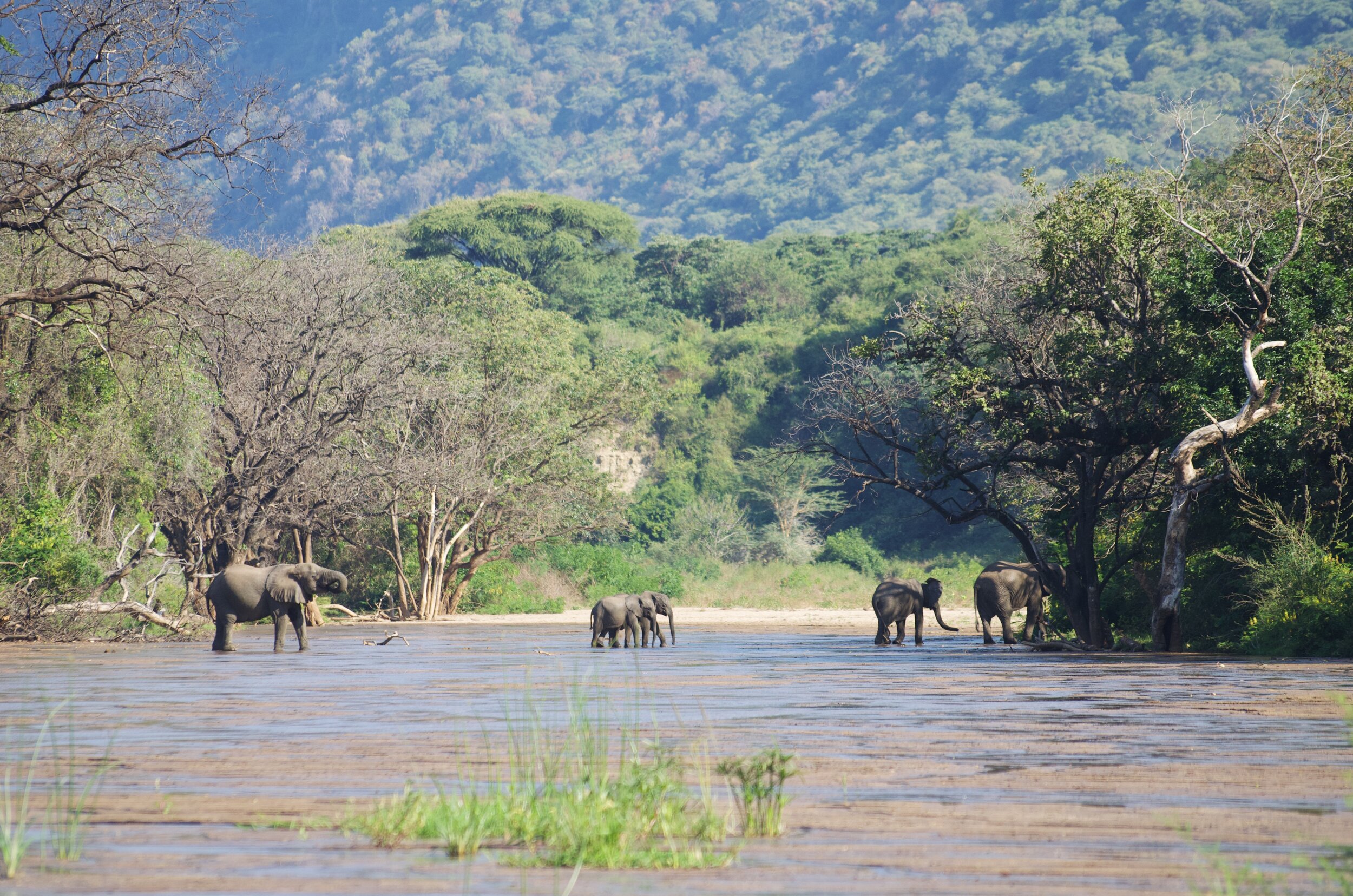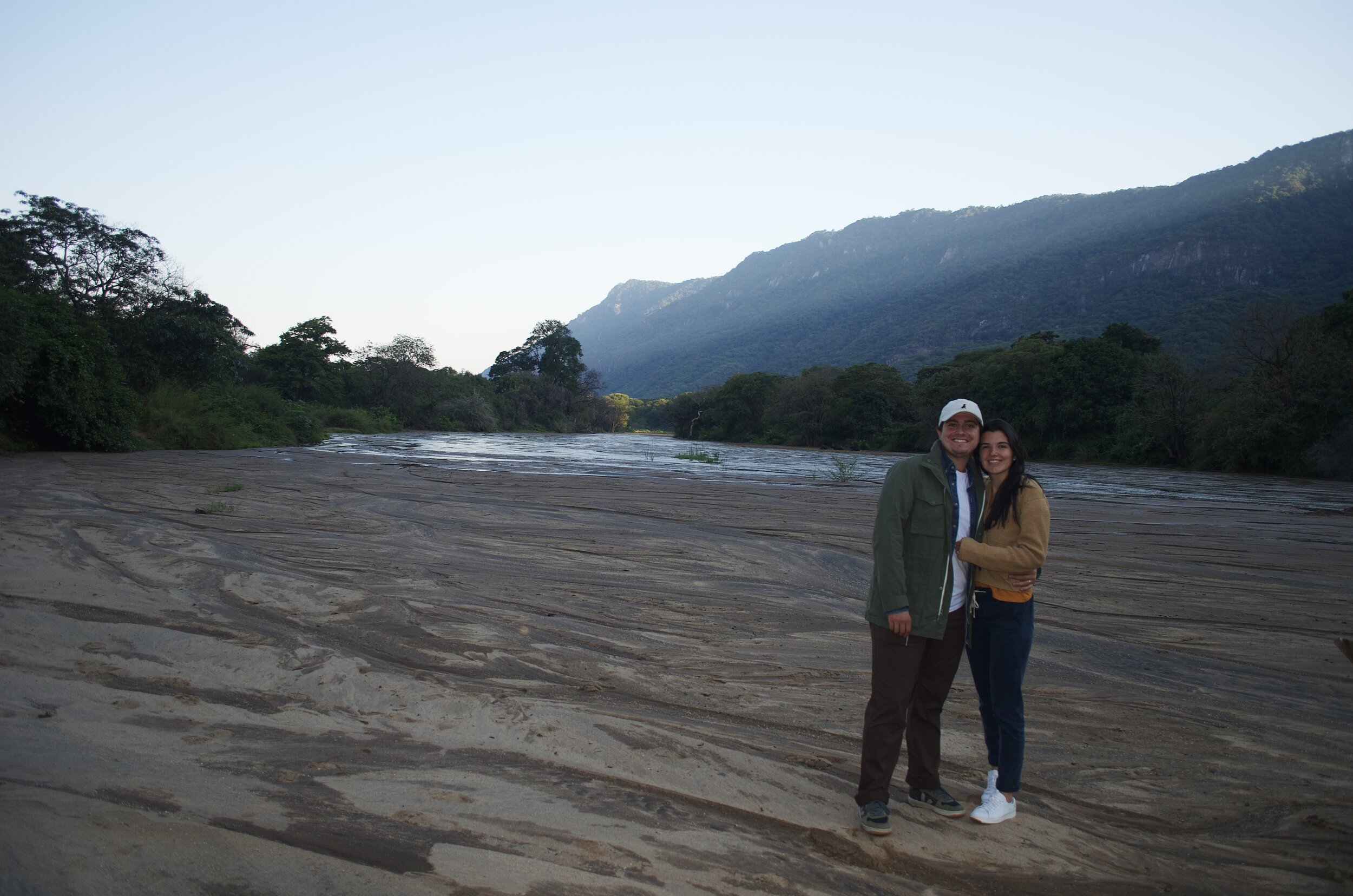Tanzania: you don’t know the half of it
Our first round in Tanzania kicked off the trip in spectacular fashion; the campsites were beautiful, the people amazing and the animals were everywhere, especially the baboons and wildebeest. We landed at Kilimanjaro Airport and drove to the Rivertrees Hotel to spend the night before the adventure begun. Apparently everyone’s safari trip begins here because the next day the parking lot was packed with Land Cruisers ready to leave on safaris. We found Sef, our guide, and began our adventure.
Lake Manyara
Our first destination was Lake Manyara National Park. It’s one of the smaller lakes in Tanzania and only half of it is within the protected area, the other half is open for fishing. Just before arriving we had a brief tuk-tuk tour of the village where we saw their rice and bean fields and banana plantations. Most of their produce stays in the village and is their main sustenance along with some meats from cattle they or the Masai grow. We visited a local group of artists and wood carvers before it was time to eat. We had lunch at a house deep in the banana plantation: coldish beer and traditional Swahili beef stew with bananas and ugali, a sort of corn polenta which accompanies all most Tanzanian foods (similar in taste to Guatemalan tortillas). With our stomachs full we were ready to enter the park. Lake Manyara is one of the smaller parks with most of it inaccessible due to the high walls around the lake. It’s mainly known to attract flamingos, which there weren’t any, we were told, because too much rain the past year reduced their food supply. The park isn’t known to be great game driving destination but you need to trust your safari company as they’ll organize what makes most sense for your situation. We were a bit wary of our chances at seeing many animals but that’s the thing with safaris, no one has any idea what you’re going to see so avoid. Having any expectations and enjoy the. Drives. The more you look, chances are the more you’ll see, hopefully. What I can and will guarantee is that everyone who goes to Tanzania will see Baboons. The first 200 photos in our camera were Baboons. We kept asking Sef to stop each time we saw them; on the road or on a tree, with babies or alone, Sef would stop the car, I’’m sure he was laughing at us, and we would take roughly 23 photos of each monkey. UPDATE: These have since all been deleted. As we continued through the park and towards our camps, we managed to find some zebras, giraffes, elephants and all sorts of antelopes. It felt as though the animals staged our entrance. At the beginning we would barely see the elephant or the giraffe was too far away to photograph but as we continued through the park, we saw more of everything and much closer, (this trend would luckily continue for the rest of the trip) little by little we were being introduced to them which just made me think of what the grand finale would be.
We arrived at our Green Camp by Wayo and the place felt like an oasis. It had the absolute best location right on the river bed with this tall rocky waterfall next to us. There was a fire set up on the sand with the dinner table right behind it. This was all in the river, since it was dry season and there was little flowing. The tents were all on wooden platforms with a queen bed, nicely decorated and solar lamps. We had our own composting toilet and a bucket shower and sink. Dinner under the stars with the rest of the guests was very nice but we followed recommendations and went to bed early since game drives usually start at 7am the latest.





You think you’re not doing anything on a safari but at the end of the day we were always exhausted and needed to rest. Although you are technically just standing and looking around, it’s, I think, the constant searching for animals that drains you. It’s off-road so you are being jerked around the car while trying to spot animals whose entire mission in life is to blend in and not be found. No matter which animal you find, it’s always exciting when you’re the first to spot it. Of course you’re always looking for the lion or the leopard (no cheetahs in Lake Manyara), but as you’re laser focused on the cats, you stumble upon all sorts of animals and birds that each gives you a different experience and insight into the ecosystem you’re driving through. Our second day of safaris started with one on foot. It’s the one moment where I am actively looking to make sure I do not find a lion. It felt weird walking in the park. You know there are elephants and lions and buffalo around but at the same time, it’s so peaceful, except I was in constant alert mode. We saw a group of giraffes which was surreal. We weren’t that close but just seeing them from the ground level made the experience so unique. They quickly saw us and galloped away but the brief moment where we kind of saw each other was incredible. The walk was cut short because we stumbled across a herd of buffalo, which are quite dangerous to be around, so we went back to the car to continue our day driving. We drove past the buffaloes and as the day continued, Sef took us to a spot where a lion had been found. When we got to them, there was literally a traffic jam but still, a lion in the wild is amazing to watch. She was pretty far away but was up on a tree so we did our best to get a few (hundred) photos of her. It was very cool to see the lion but from the moment you land in Africa, everyone says how the leopard is the most difficult to see. It’s mostly active at night and relies on stealth to catch its preys. Lucky for us, we had a night drive scheduled that second day.
The Night Drive
As we drove out of the camp at around 7pm, I was skeptic that we would see any animals at all. The only thing different from the day was that we had a spotter with a single spotlight to help us find animals. We drove out of the camp at, what felt like too fast to see anything. All I could see was the light race from left to right and back again. I had no hope for the night until two minutes into the drive Hipo, our spotter, says something to Sef in Swahili and the car stops, backs up and stops again. A chameleon. That’s what Hipo had seen, a tiny green chameleon. We couldn’t believe it, they’re impossible to find during the day and he found one on a pitch black night. There was hope we would see some more animals that night. They let us in on a secret, we had to look for glowing eyes: red meant Bush Baby, a little monkey that kind of looks like a squirrel, and green meant leopard, our dream for the night. That drive was the most exciting one in all of Tanzania. It seemed like all the animals were going crazy. Giraffes crossing the roads like crazy, elephants making all sorts of noises and running through the road, and bush babies on every tree, it felt like the whole park had gone mad but we were all for it.
We get to our halfway point and turn around, we’re a bit tired and ready to head back. We see an owl on the road and then a tail disappears into the bushes on the right. The car is tense as we all think it’s a leopard but instead, we get a baby hyena just frozen scared of the car and our spotlight. It’s 3 meters away from us and of course our camera is dead. You’ll have to take my word for it, we saw the youngest hyena puppy you could imagine, it was incredible. We keep going, we’ve got a second wind and are on the lookout. Not even 5 minutes after the hyena, right in front of us in the middle of the road are four lions taking a stroll. This time there are no cars around, this time we’re the ones who find them, this time we’re all in awe, speechless. Two mothers each with her cub walking on the road headed in the direction we were coming from. The look at us and just walk along, we could almost touch them as they passed next to us. They disappear behind us and we continue. Hipo turns to Sef and tells him he’s got a feeling that we’re going to see a leopard next. Not 5 minutes after we drove away from the lions, we spot another tail quickly disappearing into the bushes to the left. We slowly drive up and there it is, a elegant female leopard just sitting there, looking at us. It had been the topic of conversation at the dinner table, with Sef and the hotel staff. The leopard is always the hardest to find because they’re a much smaller cat, unable to defend its territory against lions or larger prey so they have to hide, and they’re very good at it. I had no hopes for the night and it’s turned out to be the greatest drive in history. Take my word for it, it was, don’t google it or try to fact check. We stay with the leopard for about 20 minutes, no one wanted to leave, Sef and Hipo were just as amazed with the animal as we were. It walked out of the bushes, stretched for a bit, crossed the road and disappeared into the opposite side. It was probably going on a hunt and we were messing up his game, can’t be too stealthy with a giant loud Land Cruiser with a big spotlight on you. We let it go on with its night and we finish ours on the highest note possible.
Farewell Gift
We still had one more day of game drives in the lake before heading to Ngorongoro Crater and we thought it couldn’t get any better after our eventful night. We had basically crossed off all the animals we could see in the lake as there are no rhinos there to see. But that’s the thing with nature, you can see the same animal or area over and over again and it will always be different. They will showcase some different behavior or you’ll notice something different with each sighting. Each animal is unique in what they let you see. The giraffes elegant yet clumsy gallop spurs a giggle. The lions usually are resting after a long night of hunting but are impressive nonetheless. Impala just run and jump.
The elephant is different because you are first struck by their size and are just amazed at this animal that’s larger than the car you’re in. You forget to notice all their subtleties like how they so precisely pick up seeds with their trunk and avoid pebbles, or how they clean themselves by throwing dust and sand on themselves. They’re incredibly intelligent and though they are massive, they can be so silent when moving you wouldn’t notice them until they’re right there next to you. We were driving to see the four lions we saw the night before and stop because we see a big bull elephant ahead of us. He’s set up a roadblock and there’s no way around it so we wait. Another smaller one comes out of the bushes and crosses the road. Then a female with a baby still breastfeeding. They stop for a bit and we hear leaves rustling all around us and the tension begins to build. All of a sudden, the entire herd of about 30 elephants comes out of the bushes and begins crossing the road and we’re right in the middle of the whole thing. We felt a rush, an excitement unlike the one felt with lions or leopards, this was unbelievable. A perfect ending to our spectacular time in Lake Manyara.
Ngorongoro Crater
The drive to Ngorongoro Crater wasn’t too long but the switchbacks we had to drive through to get up and down into the crater were never ending. When we finally began our decent, we would get glimpses of the crater and its multiple ecosystems compressed into the limited space. The crater is big, I mean, it’s massive but it’s still enclosed by its steep walls. Most of the animals stay within it year round because it’s too steep to climb out of. There’s a lake in the middle which, during the dry season, is the only place surrounded by green foliage. We noticed the jungle turning less dense, slowly into the savannah. Down on the bottom of the crater, the landscape quickly changed into a forest with taller trees and more greenery because of the small creeks throughout the area. We excited on the other side back in the savannah but this time with the large lake as far as we could see. It’s mostly flat with some small hills here and there. The game drive wasn’t quite as impressive but it is also not the best time to go as the animals tend to all congregate near the rivers far from the roads we were allowed to drive on. The place itself is incredible and it’s history, being born out of a collapsed volcano crater makes it that more special.
After long drives on bumpy roads and several days without running water, it was nice to arrive at Highlands at our halfway point and re-charge for the night. We had a long drive and more Green Camps ahead.
This is getting to long so I’ll share the second half of Tanzania in the next post.











